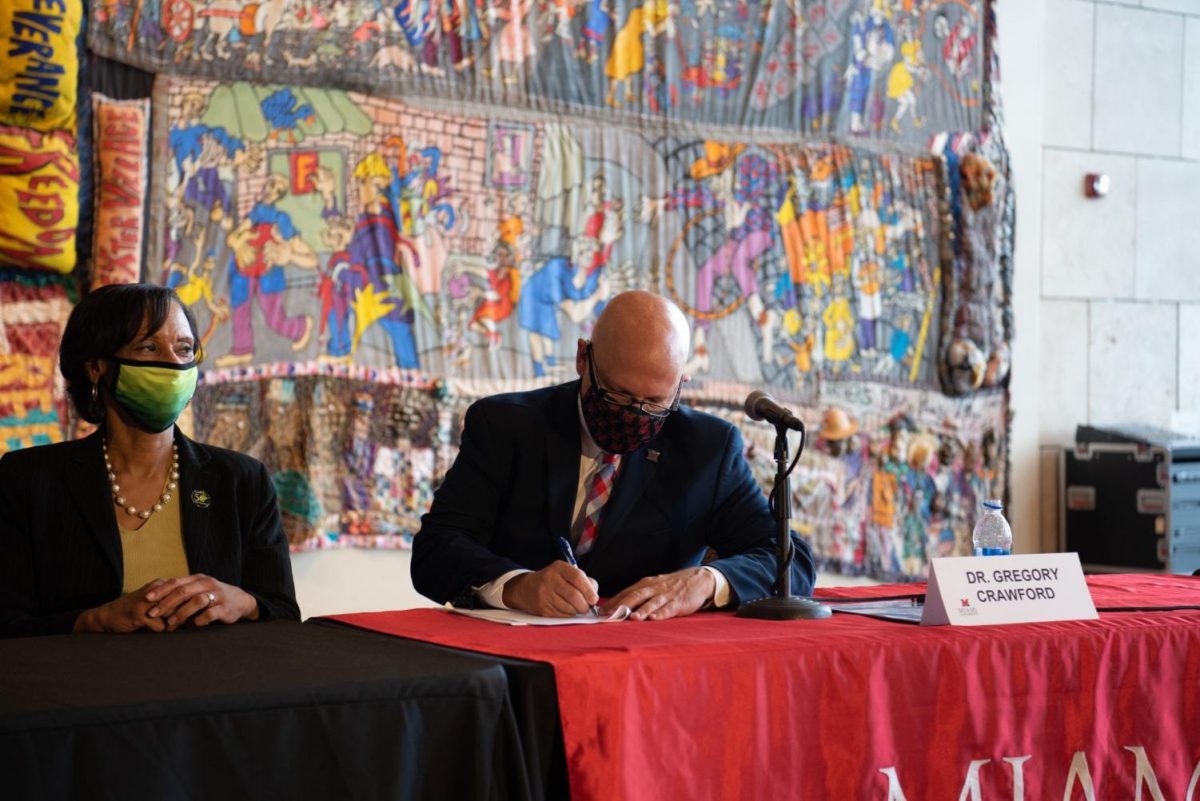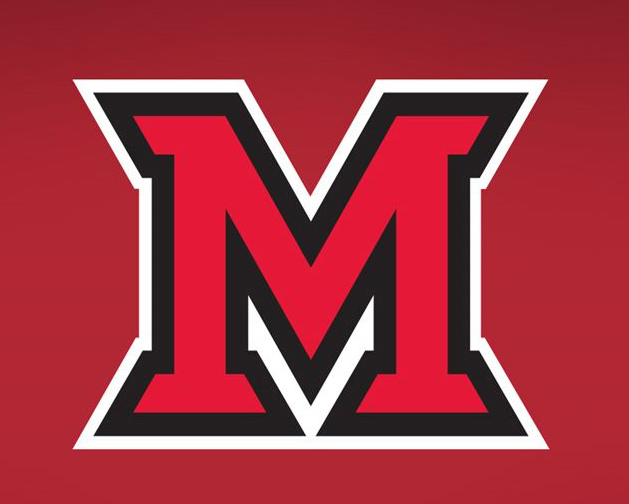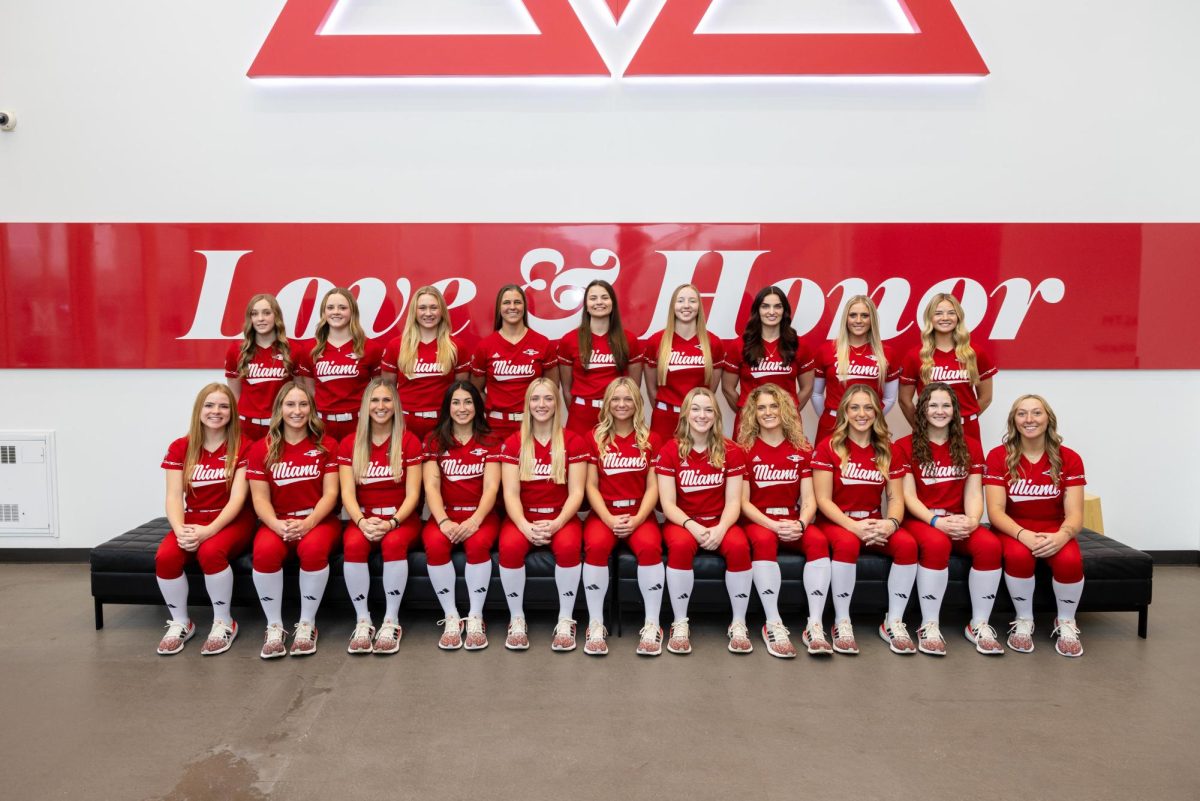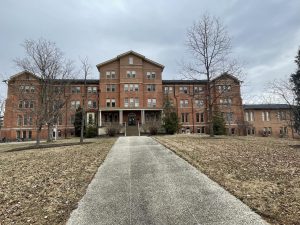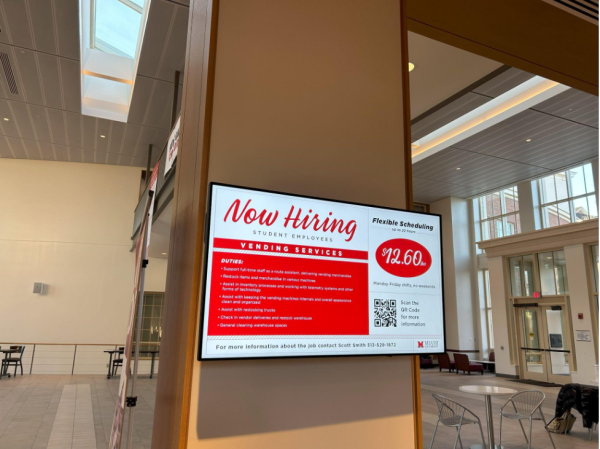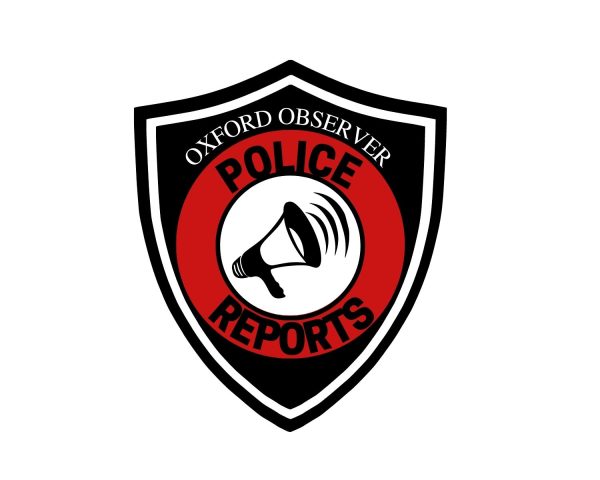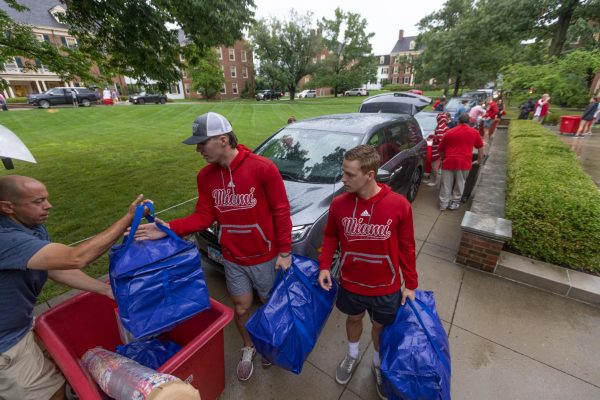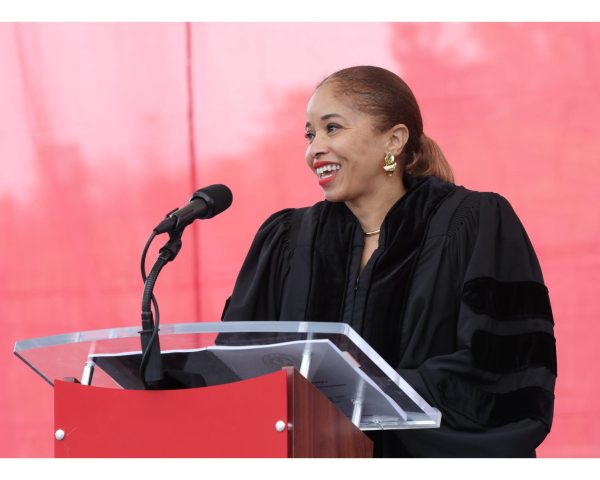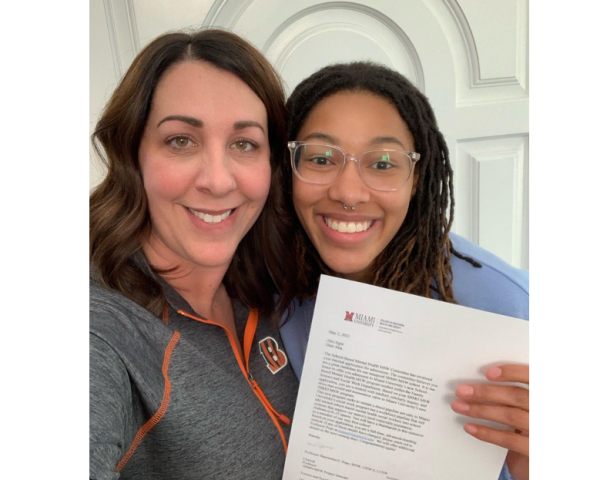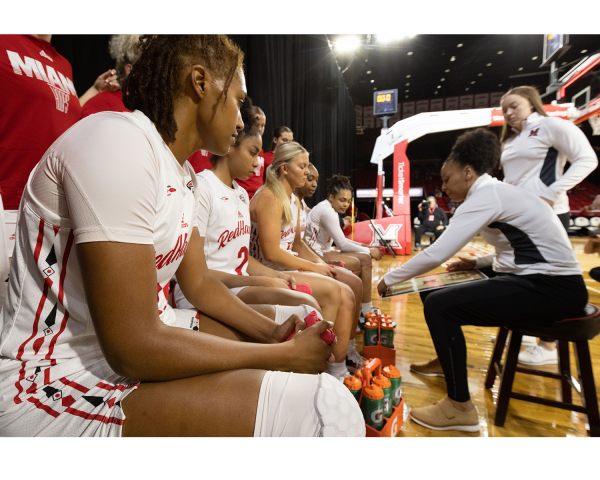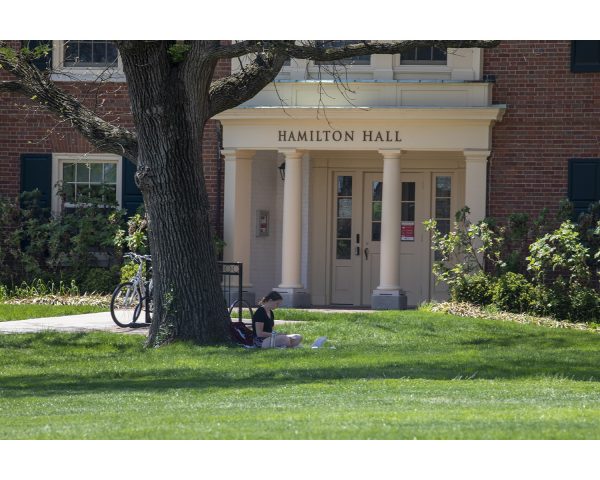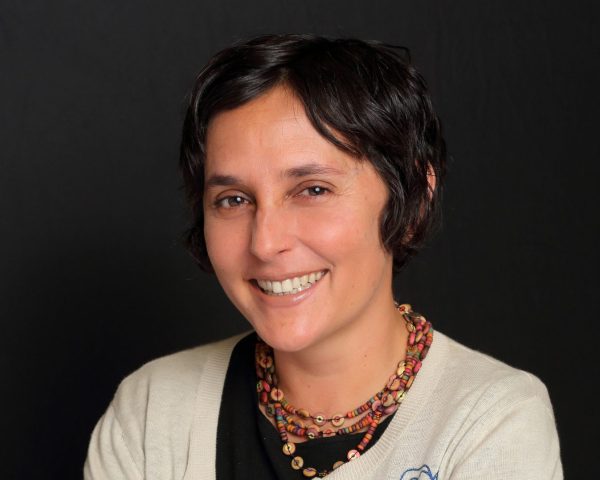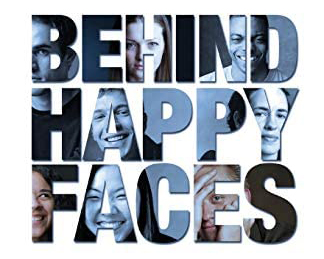Miami joins ‘Moon Shot for Equity’ to help underrepresented students
Photo provided by Scott Beseler of Northern Kentucky University
Miami President Gregory Crawford pledges Miami University’s support to the Moon Shot for Equity initiative Wednesday in a ceremony with other college presidents at the Underground Railroad Freedom Center in Cincinnati.
September 17, 2021
Miami University, partnering with three other colleges and universities, joined a “Moon Shot for Equity” this week, designed to improve educational opportunities for historically underrepresented students.
The initiative was announced Wednesday morning at the National Underground Railroad Freedom Center in Cincinnati by Miami President Gregory Crawford, along with the presidents of Cincinnati State Technical and Community College, Gateway Community and Technical College and Northern Kentucky University.
The national initiative, led by educational firm EAB, has a goal to close educational equity gaps by 2030, the college leaders said. Participating schools pledged to work together to help more historically underserved students graduate from college.
According to EAB, barely half of all Black and Latinx college students earn bachelor’s degrees within six years of entering school, compared to nearly 70% of white college students.
“Eliminating equity gaps in education is one of the most important things we can accomplish in our region, state, and country,” said Crawford in a prepared statement released Wednesday. “Miami University is honored to partner with other higher education institutions to make a commitment to providing equity-minded educational experiences, advancing student success, and serving as a model for other colleges and universities around the globe.”
National data shows that first-generation college students and students from lower-income families also graduate from college at lower rates than those from higher socio-economic backgrounds, according to EAB.
“Higher education institutions that welcome and graduate large numbers of first-generation, low-income students are engines of economic and social mobility,” NKU President Ashish Vaidya said in the statement released by the participating schools Wednesday. “Our institutions are working together to keep the American dream of opportunity alive.”
The consortium of Miami and the other three schools is the second group in the country to be selected for the “Moon Shot for Equity” program. The participating schools all had existing relationships with EAB. The first group – colleges and universities in southwest Wisconsin – joined the program last October. A third group was announced Wednesday in southeast Pennsylvania.
With the initiative comes a commitment to implement research-based practices that may begin to remove existing systemic barriers. Such practices include updating academic policies, establishing common academic pathways and providing training to university leaders on equity-mindedness.
“For too long, higher education has made the educational journey more arduous than it has to be for underserved student populations,” said EAB Vice President of Partnerships Tom Sugar in the Wednesday announcement. “All of the schools that have joined the Moon Shot for Equity have made good strides already in removing unnecessary obstacles and are committed to making additional institutional changes that will further streamline that journey.”
Three key phases – Discover, Engage, and Execute – will guide the implementation of these practices over the first 100 days. The “Discover” phase will gauge the general scope of where each school is in each key area of practice, then prioritize these areas depending on urgency and readiness. The “Engage” phase entails educating campus leaders on those priorities, forming leadership teams and organizing the plan moving forward. The “Execute” phase should see those plans come to fruition.
“I have every confidence that all of the Moon Shot for Equity ecosystems will expand over time, as they must fully serve the needs of all of their students – especially those most often left behind,” said EAB’s Sugar.
Statistics released by Miami said that 18.5% of students from the fall 2021 semester are students of color. The most recent data available from 2013 says only 72.4% of Black students graduated. From 2013 to 2019, Miami students of color made up 15% or less of the student population.
Miami has several programs meant to cater to minority students. The Bridges Program is geared toward high school students with diverse backgrounds or students committed to diversity to engage with students, faculty and staff. The Louis Stokes Alliance for Minority Participation (LSAMP) works to increase minority success in the STEM (Science, Technology, Engineering and Math) fields. MADE@Miami is a pre-semester program meant to show students the different diversity programs and campus resources available to them.
In June of 2020, Crawford created a task force focused on the advancement of diversity, equity and inclusion. The task force was created after students expressed disappointment at the university’s response to the murder of George Floyd, a 46-year old Black man who died at the hands of white police officers in Minneapolis. The events led to nationwide protests.
At the recommendations of the task force, several “town halls” were held by Miami to hear the concerns of underrepresented groups, a designated Diversity, Equity and Inclusion fund was established and the university renamed buildings to better represent the diversity of the community.
Despite these efforts, minority students at the university often communicate their frustrations about a lack of support from the administration on campus, through social media.
Sinait Sarfino, the Black Student Action Association political action chair, said that when it comes to the university’s academic instructors and the staff on campus, they do a great job supporting students of color. However, she doesn’t feel supported outside of her identity as a student.
“The lack of support is shown by a repeated lack of response from the university,” said Sarfino. “They create task force after task force but nothing ever changes. Supporting us as students is one thing. Supporting us as Black students is something else.”
There is a history of minority students having racist encounters with other students. Tyra Smith, assistant director of Cultural Initiatives in the Center for Student Diversity and Inclusion, said she believes the university doesn’t hold students accountable for their unfavorable behavior toward minority students. She said simply joining coalitions supporting diversity and equity won’t be enough to support minority students the way they need to be supported.
“If Miami wants to keep their students, they need to make a genuine, non-performative effort to show students that they are wanted here and we care about them,” she said.


